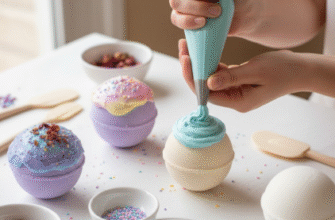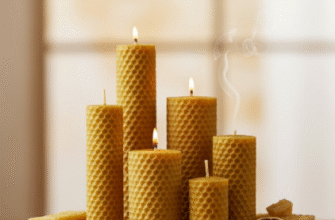Imagine stepping into your bathroom and being instantly transported to a sun-dappled pine forest. The air fills with that unmistakable, clean, resinous scent – invigorating and calming all at once. This isn’t a fantasy conjured by expensive diffusers or synthetic sprays. It’s the simple, natural magic of a pine needle bath, a wonderful way to bring the restorative essence of the outdoors into your home sanctuary.
For centuries, people have sought the unique aroma and ambiance of pine. It speaks of resilience, evergreen life, and the quiet majesty of the woods. While a walk among the pines is ideal, capturing that scent in a warm bath offers a deeply relaxing and refreshing experience, perfect for unwinding after a long day or simply reconnecting with a sense of natural tranquility.
What Does a Pine Needle Bath Feel Like?
Submerging yourself in water infused with pine essence is a multi-sensory delight. The primary sensation is, of course, the aroma. Unlike artificial pine scents, which can often be harsh or simplistic, the fragrance released from real pine needles is complex and layered. You might detect notes of sharp resin, earthy undertones, and a hint of citrusy brightness, depending on the specific pine species. This natural perfume fills the steam rising from the tub, creating an immersive aromatherapy session.
The warmth of the water enhances the release of these volatile oils, enveloping you in a fragrant cloud. It’s not just about smelling the forest; it’s about feeling enveloped by it. Many find the scent incredibly grounding, helping to clear the mind and ease feelings of stress or mental clutter. It’s like taking a deep breath of crisp, clean forest air, but with the added comfort of warm water soothing your muscles. The overall feeling is one of refreshment and deep, nature-infused calm.
Crafting Your Forest Soak: Preparation is Key
Creating your own pine needle bath is straightforward, but requires a little preparation to ensure a pleasant and safe experience. Tossing raw needles directly into your tub is generally not recommended – they can be prickly, messy, and potentially clog your drain. The best approach is to create a strong infusion or decoction first, capturing the essence without the inconvenience.
Gathering Your Needles
The first step is sourcing your pine needles. If you’re lucky enough to have pine trees nearby, keep these points in mind for a successful and responsible harvest:
- Identification: Be absolutely certain you are identifying Pine (Pinus genus) correctly. Some evergreens, like Yew (Taxus), are toxic and should never be used. If you have any doubt, consult a reliable field guide, use a plant identification app, or ask a knowledgeable local expert. Also, be sure to avoid trees that might have been sprayed with pesticides, herbicides, or are located near high-traffic roads where they absorb pollutants.
- Freshness: Look for vibrant green needles. Recently fallen, fresh needles are often abundant after windy days and are perfectly suitable. You don’t need an enormous quantity; a couple of generous handfuls (about 1-2 cups loosely packed) are usually sufficient for one fragrant bath. Brown, old needles won’t offer much scent.
- Sustainability: Gather responsibly and with respect for the trees. Take only fallen needles or snip sparingly from the tips of lower branches on healthy, mature trees. Never strip a tree bare, break large branches, or damage young saplings. Think of it as borrowing a small gift from the forest.
If gathering fresh needles isn’t feasible for you, perhaps due to location or season, you can sometimes purchase dried pine needles. Look for suppliers who specialize in herbs for cosmetic use or crafts. Ensure they are specifically pine (Pinus) and intended for this type of application, free from additives.
Making the Pine Infusion
Once you have your needles, whether fresh or dried, give them a gentle rinse under cool running water. This helps remove any surface dirt, dust, or tiny insects that might be hiding among them. Pat them lightly dry or let them air dry for a few minutes.
You have two main methods to extract that wonderful pine aroma for your bath:
The Infusion Method (Simpler & Gentler):
- Place your rinsed pine needles (around 1-2 cups) into a large heatproof bowl, glass jar, or a dedicated infusion pot.
- Boil approximately 4 to 6 cups of water in a separate kettle or saucepan.
- Carefully pour the actively boiling water directly over the pine needles in the bowl or pot.
- Immediately cover the container with a lid or plate. This is crucial for trapping the volatile aromatic oils released by the heat, ensuring a more fragrant bath.
- Let the mixture steep for at least 20-30 minutes. You can let it steep even longer, perhaps up to an hour, for a deeper aroma. The water will gradually take on a pale yellowish or light greenish tint and smell delightfully resinous.
The Decoction Method (Potentially Stronger Scent):
- Place the rinsed pine needles into a medium-sized saucepan (choose non-reactive materials like stainless steel or enamel-coated pots).
- Cover the needles completely with about 4 to 6 cups of cold water.
- Place the saucepan on the stove and bring the water to a gentle simmer over medium heat. Watch closely to prevent it from reaching a rolling boil.
- Once it begins to simmer, reduce the heat to the lowest setting that maintains a very gentle bubbling. Cover the pot loosely – allowing just a little steam to escape while retaining most of the heat and aroma – and let it simmer gently for approximately 20 to 30 minutes. Avoid vigorous boiling, as excessive heat can degrade some of the delicate aromatic compounds.
- After simmering, turn off the heat completely. Keep the pot covered and let it steep for an additional 10 to 15 minutes off the heat to allow the last bit of essence to infuse into the water.
Adding to Your Bath
The final, rewarding step is adding your fragrant pine liquid to the bath:
- Prepare your bathtub by filling it with water at your desired comfortable temperature.
- Position a fine-mesh sieve, or line a regular colander with a couple of layers of cheesecloth, over the drain end of the tub or hold it over the water stream as it fills.
- Carefully pour the warm pine needle infusion or decoction through the sieve/cheesecloth directly into the bathwater. This straining process is essential to remove all the solid needle pieces, ensuring a comfortable soak and preventing plumbing issues.
- Squeeze out any remaining liquid from the needles caught in the cheesecloth, if using.
- Discard the spent needles – they are excellent additions to your compost pile!
- Gently swirl the bathwater with your hand to ensure the pine-scented liquid is evenly distributed throughout the tub.
- Now, step in, lean back, take slow deep breaths, and allow yourself to be enveloped by the refreshing scent of the forest.
Verified Tip: Always strain your pine needle preparation thoroughly before adding it to the bath. This crucial step prevents prickly needles from floating in the water or sticking to your skin, makes cleanup significantly easier, and protects your plumbing from potential clogs. Using a fine sieve or multiple layers of cheesecloth works best for catching even small needle fragments.
More Than Just a Scent: The Sensory Experience
While we consciously steer clear of making specific health claims best left to professionals, the overall sensory experience of a pine needle bath undoubtedly contributes to a profound sense of well-being. The very act of preparing the bath can become a mindful ritual, a deliberate pause and slowing down in our often fast-paced lives. Selecting the needles with intention, preparing the warm infusion, and anticipating the quiet soak can be calming and centering activities in themselves.
The aroma-therapeutic aspect, experienced simply through the pleasure of the natural scent, is undeniable. Pine’s unique fragrance is frequently described by users as clarifying, grounding, and uplifting. Inhaling the steam infused with this authentic forest scent can feel like clearing your head, sharpening your senses, and washing away mental fatigue, purely through the power of this evocative smell. It offers a wonderfully refreshing counterpoint to stale indoor air or the often overwhelming synthetic fragrances encountered daily.
There’s also a subtle but significant benefit in connecting with nature, even in this simple, indirect way. In a world increasingly dominated by digital screens and urban landscapes, bringing an authentic element of the wild forest into our personal bathing space helps satisfy an innate human longing for the natural world. It’s a gentle reminder of the simple, grounding pleasures that nature provides freely. The warmth of the water eases physical tension in tired muscles, the crisp scent clears and refreshes the senses, and the quiet solitude of the bath allows for mental relaxation and unwinding. It’s a holistic sensory experience driven by the simple, evergreen power of pine.
Enhancing Your Pine Bath
While a pure pine needle infusion offers a beautifully simple and authentic experience, you might occasionally wish to enhance your forest soak with compatible additions:
- Epsom Salts: Adding a cup or two of plain, unscented Epsom salts (magnesium sulfate) along with your strained pine infusion is a popular choice. They dissolve easily in warm water and are widely enjoyed for promoting a sense of relaxation during a bath.
- Sea Salt: Alternatively, a handful of natural sea salt (unscented) can be added for a slightly different mineral feel to the water, reminiscent of a seaside forest edge.
- Complementary Scents (Use With Extreme Caution): If you are experienced with essential oils and know your skin’s tolerance, a *single drop* of a complementary woodsy essential oil like Fir Needle, Cedarwood, or Spruce could potentially enhance the theme. However, exercise great caution. Add it directly to the bathwater *after* the tub is filled and the pine infusion is added, never directly to the hot infusion itself or onto your skin. Too much essential oil can easily overwhelm the delicate natural pine needle scent and, more importantly, may cause skin irritation for some individuals. The primary focus should always remain on the beautiful aroma derived directly from the needles themselves.
It’s generally best to avoid adding ingredients like milk, honey, oats, or complex pre-mixed herbal bath blends unless you are very familiar with their properties and how they might interact. Keeping it simple allows the clean, refreshing scent of the pine to truly shine.
A pine needle bath is far more than just a method for getting clean; it’s a beautiful, accessible invitation to pause, breathe deeply, and immerse yourself completely in the restorative scent and spirit of the forest. It requires minimal materials but offers maximum sensory reward. It’s a simple, natural luxury that bridges the gap between your home and the great outdoors, providing a unique, refreshing escape without needing to step outside. So next time you crave a moment of pure, uncomplicated relaxation and a breath of fresh forest air, consider the simple ritual of gathering some needles, preparing an infusion, and drawing a bath filled with the evergreen soul of the pine tree. Let the tranquility of the woods embrace you.








